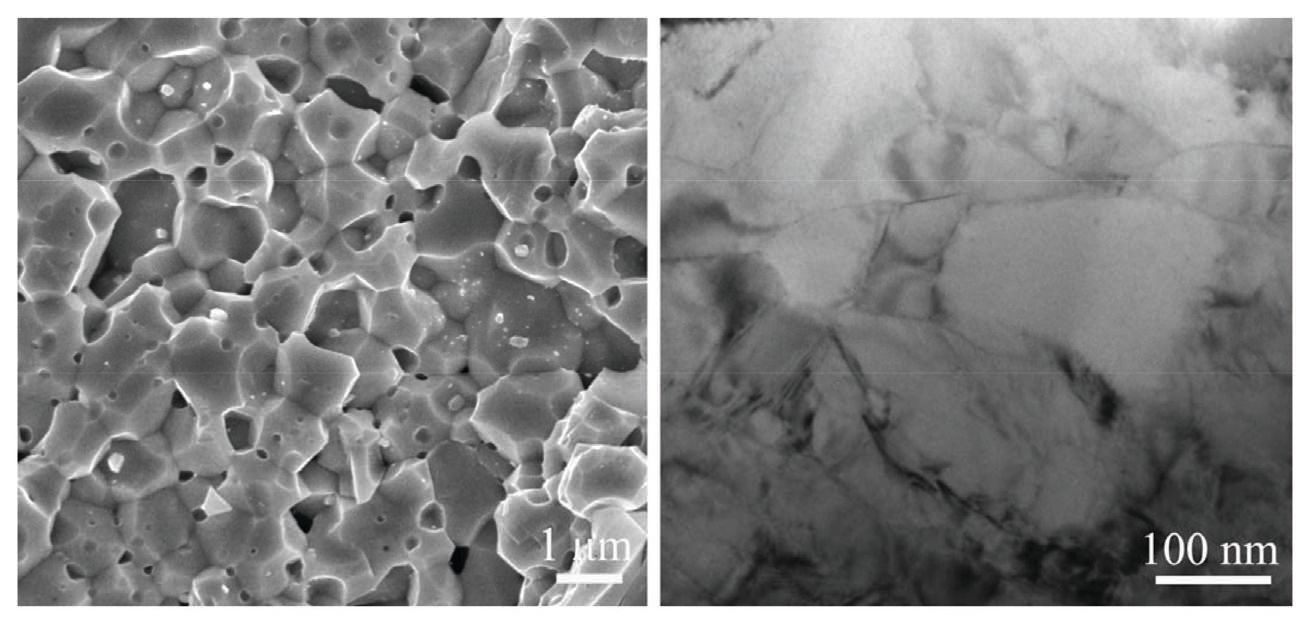Environmentally friendly thermoelectric material
Dr. Neil Canter, Contributing Editor | TLT Tech Beat November 2013
A new thermoelectric material under development is indium-doped tin telluride.
KEY CONCEPTS
•
Thermoelectric materials have the potential to turn the heat lost during specific processes into electricity.
•
A new thermoelectric material that is under development is indium-doped tin telluride.
•
Indium-doped tin telluride is a promising candidate for use in automotive tail pipes, which may lead to as much as a 5 percent gain in fuel economy.
THE EMPHASIS ON IMPROVING THE EFFICIENCY OF AUTOMOBILES and industrial machinery is leading researchers to look for ways to take advantage of the heat lost during such processes as combustion. This trend has prompted an examination of thermoelectric materials that can produce electricity from waste heat.
These materials function through a temperature difference or the use of an electric potential to create a temperature difference. Zhifeng Ren, Anderson Chair Professor of Physics at the University of Houston, says, “A thermoelectric material has to be good at electron transport or provide good electrical conductivity while minimizing thermal conductivity.”
One of the parameters used to evaluate thermoelectric materials is the Seebeck coefficient. Ren says, “A very good Seebeck coefficient means that a higher voltage is generated for a given temperature difference. A large temperature difference is essential to maximize the voltage difference.”
A second way to express the performance of thermoelectric materials is to use the unitless parameter thermoelectric figure-of-merit, which is the ratio of the product of electrical conductivity times the square of the Seebeck coefficient over the thermal conductivity. Ren says, “Before 2000, the best thermoelectric materials achieved figure-of-merits of approximately one. Since the use of the nanomaterials concept, the figure-of-merit is increasing to nearly two.”
One promising thermoelectric material is lead telluride. But there are problems with this compound. Ren explains, “Lead telluride has thermoelectric properties that are pretty good but is not considered a commercially promising material because lead salts are environmentally unfriendly.”
One option that has been examined is tin telluride, which is a more environmentally friendly material. But the problems with this compound are performance related. Ren says, “Tin telluride does not have good thermoelectric properties because the electrical conductivity is too high, and, as a consequence, the Seebeck coefficient is too low.”
If tin telluride can be modified, then there is the potential to have a thermoelectric material that is both effective and environmentally friendly. Such a material has now been developed.
INDIUM DOPING
Ren and his fellow researchers in professor Gang Chen’s group at MIT found that thermoelectric performance can be improved through doping tin telluride with indium. He says, “We found that the power factor for the indium-doped tin telluride increased significantly while the thermal conductivity declined.”
Indium-doped tin telluride was prepared through ball milling indium, tin and tellurium in a stainless steel jar with a high-energy ball mill under an inert atmosphere (argon gas) and was followed by hot pressing. Once the material was prepared, it was then cut and polished into the geometry needed for doing measurements. The concentration of indium used ranged from 0.25 to 1.0 atom percent.
Testing of the indium-doped tin telluride took place over a temperature range between room temperature and 873 K. Ren says, “We obtained a peak figure-of-merit figure of 1.1 at an indium concentration of 0.25 atom percent at 873 K. In contrast, tin telluride in the absence of indium can only produce a figure-of-merit of 0.8.”
Scanning electron microscopy and transmission electron microscopy were used to characterize the size of the indium-doped tin telluride. Grains are observed with sizes less than a micrometer, as shown in Figure 3. Smaller particles on the nanoscale also are detected with sizes of approximately 100 nanometers.
 Figure 3. The scanning electron microscopic image (shown on the left) and the transmission electron microscope image (shown on the right) show that grain sizes for indium-doped tin telluride, which is a potential new thermoelectric material, to be less than one micrometer. (Courtesy of the University of Houston)
Figure 3. The scanning electron microscopic image (shown on the left) and the transmission electron microscope image (shown on the right) show that grain sizes for indium-doped tin telluride, which is a potential new thermoelectric material, to be less than one micrometer. (Courtesy of the University of Houston)
Indium acts as a p-type dopant. This means that positive holes are the charge carriers tin telluride uses to enhance electrical conductivity. Ren indicated that future research involves identifying and evaluating n-type dopants that donate electrons.
Ren believes that the use of a thermoelectric material to capture the heat generated from the internal combustion engine of an automobile can be significant. He says, “Heat accounts for about 30 percent of the energy generated during combustion. Placement of a material such as indium-doped tin telluride after the catalytic converter may lead to converting 10 percent of this heat into electricity. This may lead up to a 5 percent gain in fuel economy.”
A significant improvement in efficiency also might be realized with coal-fired power plants where the use of a thermoelectric material may boost the conversion rate from 40 percent to as high as 48 percent.
Additional information on the development and evaluation of indium-doped tin telluride can be found in a recent publication (
1) or by contacting Ren at
zren@uh.edu.
REFERENCES
1.
Zhang. Q., Liao. B., Lan. Y., Lukas, K., Liu, W., Esfarjani, K., Opeil, C., Broido, D., Chen. G. and Ren. Z. (2013), “High Thermoelectric Performance by Resonant Dopant Indium in Nanostructured SnTe,”
Proceedings of the National Academy of Sciences,
110 (33), pp. 13261-13266.
 Neil Canter heads his own consulting company, Chemical Solutions, in Willow Grove, Pa. Ideas for Tech Beat items can be sent to him at neilcanter@comcast.net
Neil Canter heads his own consulting company, Chemical Solutions, in Willow Grove, Pa. Ideas for Tech Beat items can be sent to him at neilcanter@comcast.net.